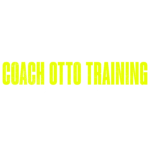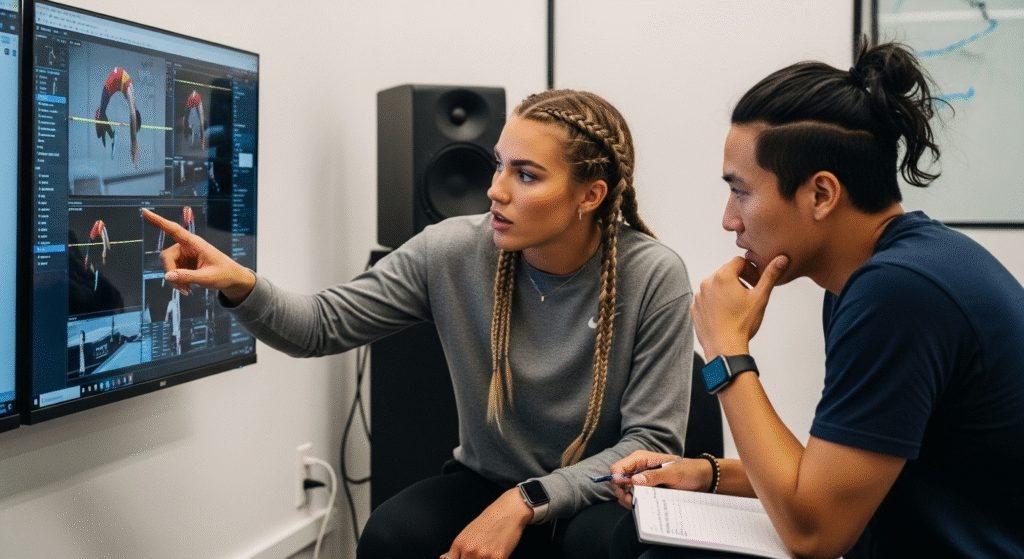High Jump Coaching Techniques: High jump is a technically demanding and physically challenging track and field event that requires a blend of strength, agility, and precise technique. Coaches play a pivotal role in developing athletes who can excel in this discipline. This article delves into advanced coaching techniques for high jump, offering insights into biomechanics, innovative training strategies, and elite-level skill development to help athletes reach their full potential. The difference between good and great high jumpers often comes down to the quality of coaching they receive. By implementing elite high jump coaching methods, you can transform promising athletes into championship contenders. Whether you’re working with collegiate athletes or training future Olympians, these professional coaching strategies for high jump athletes will provide you with the tools needed to elevate performance and achieve breakthrough results.
High Jump Coaching Techniques: Understanding Biomechanics in High Jump
The foundation of elite high jump coaching methods lies in a thorough understanding of biomechanics. The high jump is not merely about leaping high—it’s about converting horizontal momentum into vertical elevation while maintaining precise body control throughout the entire movement sequence. By breaking down the jump into its constituent phases, coaches can identify specific areas for technical refinement and performance enhancement. The approach phase is characterized by a curved run-up that generates angular momentum, which is crucial for the rotational component of modern high jump techniques. This curved approach typically consists of 8-10 strides for experienced jumpers, with the final three steps being particularly critical for positioning the body correctly for takeoff. The penultimate step should be slightly longer than the others, facilitating the lowering of the center of mass to prepare for the explosive upward drive. During the takeoff phase, the athlete must convert horizontal velocity into vertical elevation. This conversion is most efficient when the takeoff leg is positioned almost perpendicular to the ground, with the free leg driving upward to initiate rotation. The arms should swing in coordination with the legs to enhance the vertical impulse. The most technically demanding aspect is the flight phase, where the Fosbury Flop technique dominates elite competition. This technique requires the jumper to rotate their back to the bar, arch their body over it, and pass their center of mass beneath the bar while their body passes above it—a counterintuitive but highly effective approach. Video analysis has revolutionized biomechanical coaching in high jump. Using slow-motion capture and frame-by-frame assessment, coaches can measure approach speeds, takeoff angles, and body positioning with unprecedented precision. This technological approach allows for objective analysis of performance metrics that would be impossible to assess with the naked eye. When implementing professional coaching strategies for high jump athletes, it’s essential to conduct regular biomechanical assessments throughout the training cycle. These evaluations should track improvements in approach consistency, takeoff mechanics, and bar clearance technique. By establishing biomechanical baselines and goals, coaches can create personalized technical development plans for each athlete’s unique physical attributes and jumping style.
- The approach phase requires careful calibration of speed and curve radius to optimize angular momentum generation.
- At takeoff, the vertical impulse is maximized when the free leg and arms coordinate in an explosive upward drive.
- During bar clearance, body segmentation and timing are critical—the head, shoulders, hips, and legs must clear the bar in a specific sequence for maximum efficiency.
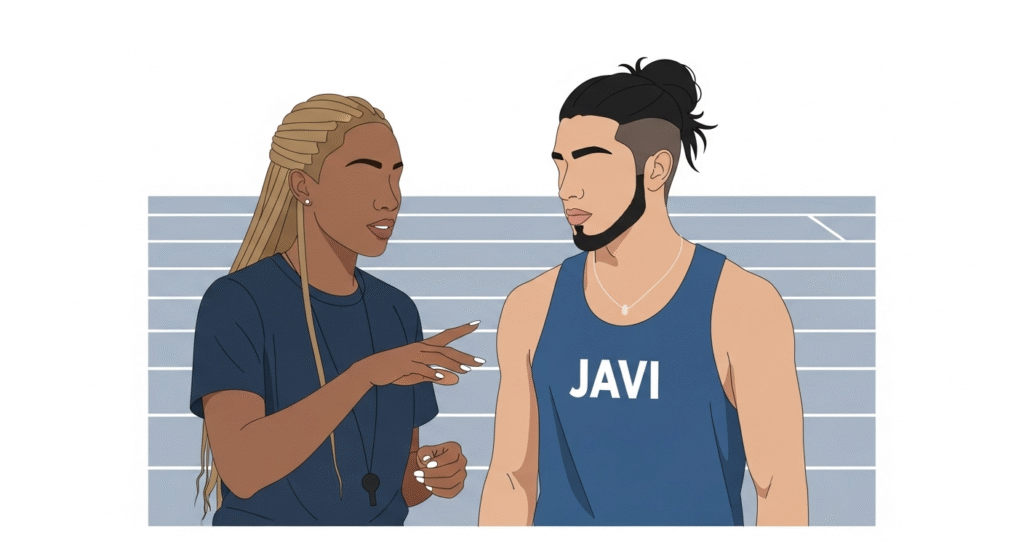
High Jump Coaching Techniques: Developing Comprehensive Training Programs
Elite high jump coaching methods require sophisticated training program design that balances technical skill development with physical conditioning. The modern high jumper needs a unique combination of explosive power, flexibility, coordination, and specific strength that must be developed through carefully structured training cycles. Plyometric training forms the cornerstone of explosive power development for high jumpers. These exercises exploit the stretch-shortening cycle to develop fast-twitch muscle fibers and improve the rate of force development—critical factors in takeoff performance. A progressive plyometric program might begin with basic bounds and hops before advancing to depth jumps, single-leg reactive jumps, and specialized high jump simulation exercises. For example, the ‘scissor box drill’ involves jumping from a low platform and clearing a horizontal barrier using a scissor technique, developing takeoff power while reinforcing proper mechanics. The strength training component for high jumpers should focus heavily on unilateral (single-leg) exercises that mimic the asymmetrical nature of the takeoff phase. Split squats, single-leg deadlifts, and walking lunges develop the specific strength patterns needed for effective force application during takeoff. Coaches implementing professional coaching strategies for high jump athletes should ensure that strength training emphasizes not just maximum strength but also strength-speed—the ability to generate force quickly. Periodization is essential for peaking at the right time and preventing overtraining. A typical high jump training year might include a general preparation phase (emphasizing strength and conditioning), a specific preparation phase (focusing on technical development and power), a competition phase (maintaining technique while reducing volume), and a transition phase (active recovery). Within each week, training sessions should alternate between high and low intensity days, with technical sessions scheduled when athletes are fresh and recovered. The training program must also address the mobility requirements unique to high jump. Hip flexor and hamstring flexibility are crucial for achieving the extreme ranges of motion required during bar clearance. Similarly, ankle and thoracic spine mobility directly impact takeoff efficiency and the athlete’s ability to create the characteristic back arch of the Fosbury Flop. Implementing dynamic flexibility routines before training and static stretching after sessions helps develop and maintain the required mobility without compromising power production.
- Design plyometric progressions that gradually increase intensity, starting with low-impact bounds and advancing to specialized jump simulations that mimic competition movements.
- Incorporate specific strength exercises like Bulgarian split squats and single-leg Romanian deadlifts to develop unilateral power and stability critical for takeoff performance.
- Structure the training year into distinct phases using scientific periodization principles to optimize both physical development and technical refinement.
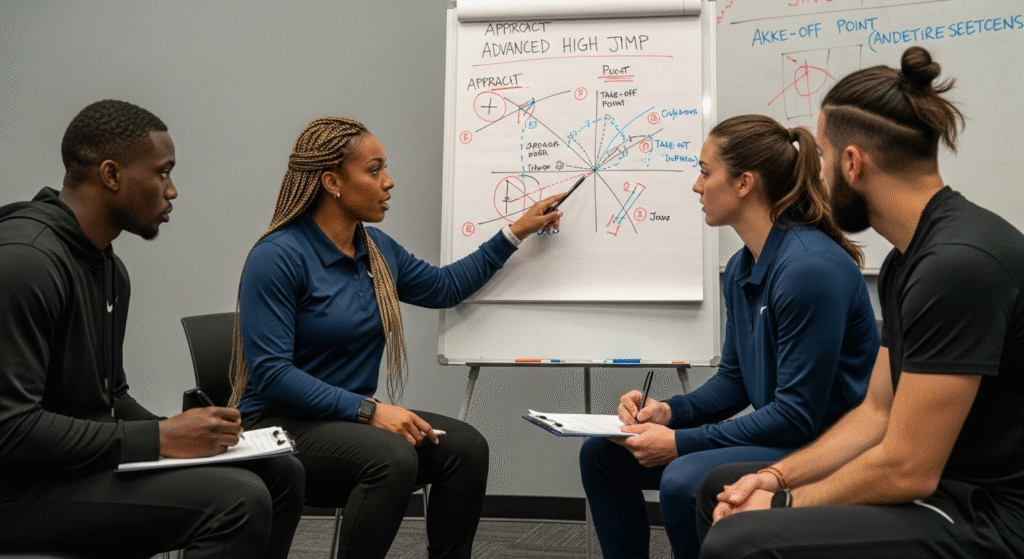
High Jump Coaching Techniques: Elite-Level Skill Development
Advanced skill development represents the pinnacle of elite high jump coaching methods. While physical attributes provide the foundation, technical mastery differentiates world-class performers from their competitors. Coaches must implement systematic skill progression to develop the complex movement patterns required for high-level competition. The Fosbury Flop technique, now universal among elite jumpers, requires painstaking technical development. Breaking down this technique into component parts allows athletes to master each element before integrating them into the complete jump. For example, back layout drills on soft mats help athletes develop comfort with the inverted position and back arch required for efficient bar clearance. Similarly, curved approach drills focusing on consistent foot placement and body lean help establish the angular momentum needed for rotation over the bar. One particularly effective drill for developing takeoff mechanics is the ‘jump and reach’ exercise performed along the curved approach. Athletes run their normal approach but, instead of jumping over a bar, they focus on exploding upward and reaching for a suspended target with their takeoff-side arm. This drill isolates the critical conversion of horizontal to vertical momentum while reinforcing proper body positioning. For advanced athletes, implementing constraint-based training can accelerate skill development. By temporarily restricting certain movement options or exaggerating others, coaches can help athletes develop heightened awareness of specific technical elements. For instance, having athletes perform jumps with arms bound to their sides forces them to emphasize leg drive and torso positioning, often resulting in improved coordination when the constraint is removed. Professional coaching strategies for high jump athletes should include regular technical assessments using both qualitative observation and quantitative measurement. Establish clear technical benchmarks such as approach consistency (measured by foot placement accuracy), takeoff position (assessed by ankle, knee, and hip angles), and bar clearance efficiency (evaluated by clearance height relative to center of mass height). These metrics provide objective feedback that guides future skill development priorities. Resistance training tools offer valuable methods for enhancing jump mechanics. For example, band-resisted jumps increase body awareness during the takeoff phase, while lightweight ankle weights can improve spatial awareness and leg control during the flight phase. However, these tools must be used judiciously to avoid reinforcing compensatory movement patterns that could compromise technique under competition conditions.
- Develop technical mastery of the Fosbury Flop through progressive drills that isolate each phase of the jump before integrating them into full attempts.
- Implement specialized drills like the penultimate step box drill to emphasize proper positioning and timing during the critical pre-takeoff phase.
- Use constraints-based training approaches to heighten athletes’ awareness of specific technical elements and accelerate motor learning.
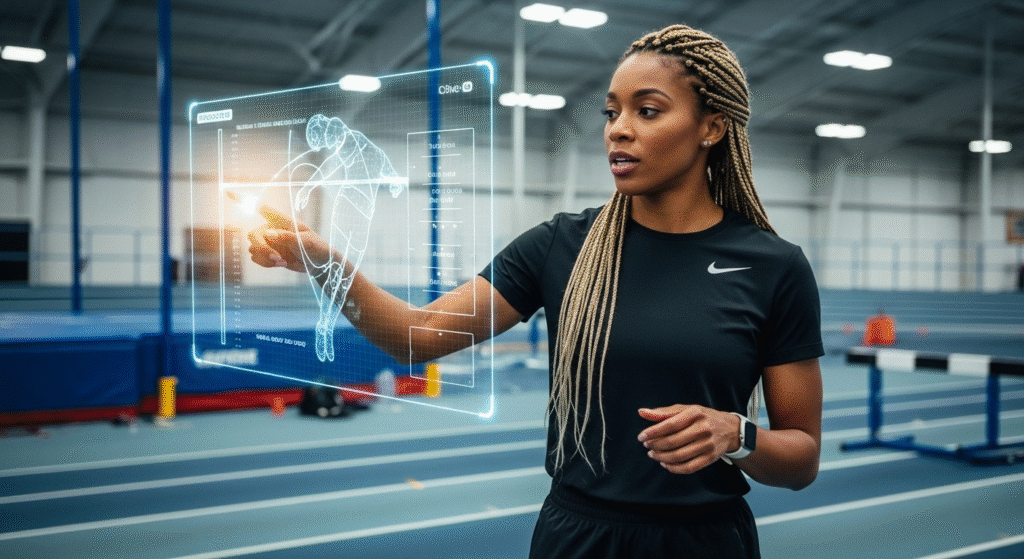
High Jump Coaching Techniques: Conclusion
Mastering high jump coaching requires a comprehensive approach that combines biomechanical understanding, strategic training, skill refinement, mental conditioning, and technological integration. The synthesis of these elements forms the foundation of elite high jump coaching methods that can transform talented athletes into championship performers. Effective high jump coaching begins with a deep understanding of the event’s biomechanics—the intricate relationship between approach speed, takeoff mechanics, and bar clearance techniques. This knowledge must then be applied through carefully structured training programs that develop the specific physical attributes demanded by the event while systematically building technical proficiency through progressive skill development. The psychological dimension cannot be overlooked, as mental resilience and focused concentration often determine success at critical heights. By implementing visualization practices, competition routines, and strategic goal-setting, coaches can prepare athletes to perform optimally under pressure. The integration of technology and data analytics provides objective feedback that accelerates technical refinement and performance improvement. However, these tools must be used judiciously, with the understanding that the coach’s experiential knowledge remains essential for interpreting data within the context of each athlete’s unique needs. For coaches seeking to implement professional coaching strategies for high jump athletes, the journey requires continuous education and a willingness to blend traditional coaching wisdom with contemporary scientific approaches. The most successful coaches maintain a learning mindset, consistently seeking new insights while remaining grounded in the fundamental principles that have stood the test of time. By embracing these advanced coaching techniques, you can significantly enhance your athletes’ performance, leading to greater success in competitions and the personal satisfaction of helping athletes realize their full potential. Commit to excellence in your coaching practice, and you’ll elevate not just your athletes over the bar, but the entire standard of high jump performance within your program.
